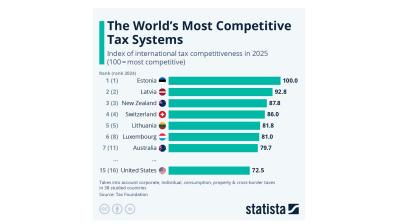Across the EU far more has been invested in roads than railways over the last three decades, but this trend has been even more prevalent in the newer EU members in the east of the bloc, showed a new study by the Wuppertal Institut and T3 Transportation Think-Tank, commissioned by Greenpeace Central and Eastern Europe.
European countries have, on average, allocated 66% more funds towards the expansion and renovation of road networks since 1995 than they have towards the development of railways, according to the study that examines infrastructure investments in road and rail systems across the 27 EU countries, along with Norway, Switzerland and the UK.
€1.5 trillion for roads
The research findings indicate that over the past three decades, European countries have allocated approximately €1.5 trillion towards the enhancement of road infrastructure, far above the €930bn invested in rail development, despite the obvious climate benefits of promoting rail transport.
Cars, vans and trucks are responsible for 72% of Europe's transportation emissions, while rail transportation accounts for a mere 0.4%.
However, the disparity in funding has indirectly encouraged the use of cars over more eco-friendly public transportation.
“Transport remains the only sector in the EU that has consistently increased its domestic greenhouse gas [GHG] emissions,” said Greenpeace’s press release.
"Greenhouse gas emissions from transport have actually increased by 15% in the period from 1995 to 2019. At the same time, an average train journey in Europe produces 77% less greenhouse gas emissions than a car trip per passenger kilometre. Data shows that a dense and well-developed rail network is key to making public transport accessible and attractive to people, which brings pollution down.”
Motorways more than doubled
Of the 30 countries analysed in the report, only three – Austria, Belgium and the UK – gave precedence to rail projects over road investments in their budgets.
Looking at per capita spending, only Austria, Belgium, Denmark, Luxembourg and the UK were found to have allocated more funds for railways than for roads. France made nearly equal investments in both rail and road infrastructure.
Overall, there has been a 60% expansion in Europe's motorway network, which has grown by over 30,000 kilometres since 1995. Conversely, European rail networks have shrunk by 6.5%, or 15,650 kilometres.
This has contributed to a 29% surge in the demand for motorised road transport between 1995 and 2019.
In the 30 European countries that were examined, the total length of motorways expanded from 51,494 kilometres to 82,493 kilometres, representing growth of 60% during the period from 1995 to 2020. In half of the 30 countries studied, the motorway networks more than doubled in length.
The most significant expansion in motorway length was observed in Ireland, with an increase of 1,321%, followed by Romania with 714% and Poland with 596%. Conversely, the countries with the lowest growth in motorway length were Lithuania at 2%, Latvia at 3%, and Belgium at 6%.
On top of this, since 1995, a dozen new civil aviation airports have been established, each now handling a minimum of 150,000 passengers annually across the EU. Just two of them are in the Central and Eastern Europe region: Bydgoszcz and Warsaw Modlin, both in Poland.
Railways closed
By contrast, approximately 13,700 kilometres of railway tracks, primarily regional lines, along with over 2,500 railway stations, have either been temporarily shuttered or have permanently ceased passenger train services. This impact falls disproportionately on rural areas. The study’s authors found that over half of the closed railway lines could be reopened relatively easily.
“Millions of people outside cities have no option but to own a car to get to work, take kids to school or access basic services, living in areas with little or no public transport. This is a direct result of governments dismantling local and regional rail networks while pouring money into roads,” said Lorelei Limousin, Greenpeace EU senior climate campaigner.
“Climate pollution from transport is through the roof, and we’ve seen people around Europe and across the world suffer the consequences. Governments and the EU must hit the brakes on this dismantling of our train lines, reopen disused tracks and invest in rail – and stop the massive subsidies for roads that wreck the climate, pollute the air and make people’s lives miserable.”
Well connected
Overall, the European continent boasts an extensive network of inland transportation infrastructure, with the European Union laying claim to one of the world's most densely interconnected transport networks.
The greatest concentrations of motorways are located in Northwestern Europe, particularly in the vicinity of major urban centres and close to seaports. Many of Europe's capital cities and large metropolitan areas are encircled by a ring of well-developed motorways. Additionally, regions surrounding key northern European seaports, such as Bremen with the port of Bremerhaven, Zuid-Holland with the port of Rotterdam and Hamburg, have some of the highest motorway densities across the continent.
On the other hand, high railway density is found in a broader range of countries spanning both east and west. Density is highest in regions of Czechia, Germany, Hungary, the Netherlands, Poland and Romania. Both Western and Central Europe boast robust railway networks, while coastal regions tend to have relatively lower railway densities. The highest railway network densities, surpassing 300 km per 1,000 square km, are concentrated in three regions in Germany, one in Czechia and one in Hungary, according to 2020 Eurostat data.
Rich-poor divide
“As a common theme, the ratio of road to rail investments becomes higher as the countries’ national income gets lower, but there are significant differences and exceptions,” says the report.
In one notable example of this division, Romania’s ratio is the highest of all the countries at 12.2, whereas the ratio in neighbouring Bulgaria is just 4.4.
The report goes on to elaborate: “First, richer countries tend to spend more money per capita than their poorer counterparts in absolute terms, both for existing and new infrastructure. Second, the countries usually spend more money for new investments than for maintenance. Third, the spread between road and rail per-capita investments is high, indicating different priorities all over Europe. This can only partly be explained with different income levels.”
Back to rail?
However, there are indications of a shift towards rail in recent years. Starting from 2018, the gap between investment into road and rail has gradually diminished, shifting from a 66% preference for roads prior to 2018 to a 34% difference since that time. Nevertheless, several European nations have persisted in the closure of additional railway lines and stations. Simultaneously, they have continued with the planning and construction of new motorways and expansions to airports.
This situation was observed in several European countries, including Denmark, France, Italy and Luxembourg. In Denmark, the ageing rail network posed challenges in the early 2000s. However, since 2011 Denmark has significantly boosted its investments in railways. A similar narrative can be found in Luxembourg, which is striving to increase the proportion of public transportation to 25%.
Luxembourg and the United Kingdom allocate more than twice as much funding to rail maintenance compared to road maintenance, which may also indicate a shift in priorities.
Conversely, during the period from 2018 to 2020, Bulgaria and Norway allocated a significant portion of their budgets to road expansion projects. In Bulgaria, there seems to be a concerted effort to catch up with investments relative to Western Europe, emphasising road development.
Features

Indian bank deposits to grow steadily in FY26 amid liquidity boost
Deposit growth at Indian banks is projected to remain adequate in FY2025-26, supported by an improved liquidity environment and regulatory measures that are expected to sustain credit expansion of 11–12%

What Central Asia wants out of the upcoming Washington summit
Clarity on critical minerals and a lot else.

Global leaders gather in Gyeongju to shape APEC cooperation
Global leaders are arriving in Gyeongju, the cultural hub of North Gyeongsang Province, as South Korea hosts the Asia Pacific Economic Cooperation summit. Delegates from 21 member economies are expected to discuss trade, technology and security.

Project Matador marks new South Korea-US nuclear collaboration
Fermi America, a private energy developer in the United States, is moving ahead with what could become one of the most significant privately financed clean energy projects globally.



